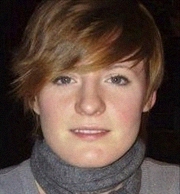Tutor HuntResources Biology Resources
Polarity Components In C.albicans Hyphae Show Different Patterns Of Localization.
Eukaryot Cell. 2010 Oct;9(10):1455-65.
Date : 17/04/2012
Author Information

Uploaded by : Laura
Uploaded on : 17/04/2012
Subject : Biology
During the extreme polarized growth of fungal hyphae, secretory vesicles are thought to accumulate in a subapical region called the Spitzenkörper. The human fungal pathogen Candida albicans can grow in a budding yeast or hyphal form. When it grows as hyphae, Mlc1 accumulates in a subapical spot suggestive of a Spitzenkörper-like structure, while the polarisome components Spa2 and Bud6 localize to a surface crescent. Here we show that the vesicle-associated protein Sec4 also localizes to a spot, confirming that secretory vesicles accumulate in the putative C. albicans Spitzenkörper. In contrast, exocyst components localize to a surface crescent. Using a combination of fluorescence recovery after photobleaching (FRAP) and fluorescence loss in photobleaching (FLIP) experiments and cytochalasin A to disrupt actin cables, we showed that Spitzenkörper-located proteins are highly dynamic. In contrast, exocyst and polarisome components are stably located at the cell surface. It is thought that in Saccharomyces cerevisiae exocyst components are transported to the cell surface on secretory vesicles along actin cables. If each vesicle carried its own complement of exocyst components, then it would be expected that exocyst components would be as dynamic as Sec4 and would have the same pattern of localization. This is not what we observe in C. albicans. We propose a model in which a stream of vesicles arrives at the tip and accumulates in the Spitzenkörper before onward delivery to the plasma membrane mediated by exocyst and polarisome components that are more stable residents of the cell surface.
This resource was uploaded by: Laura
